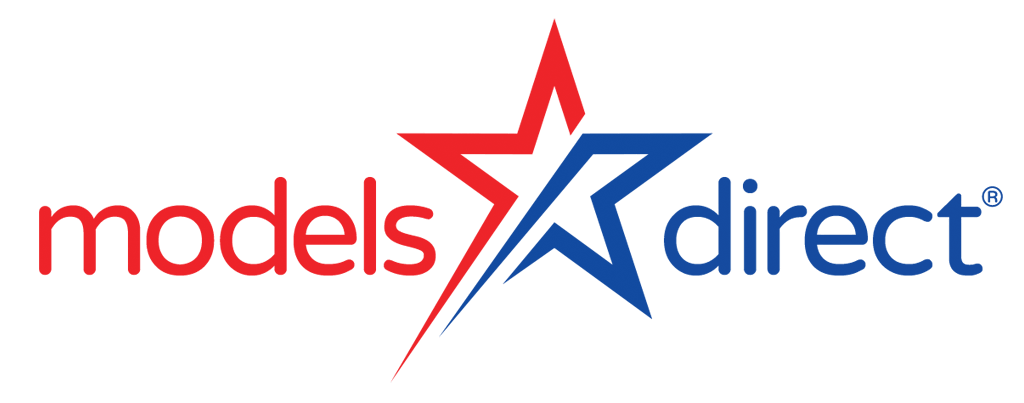
Damian O'Connor is Managing Director of Models Direct, the leading UK and international modelling agency. In this interview, he talks in detail about the company and how it helps all kinds of people take their first steps into the exciting world of modelling. He also shares his thoughts on the contentious issues of body image, 'size zero' and plus-size models. explaining how Models Direct clients need models of all shapes and sizes.
Could you tell me a bit about Models Direct?
We're the UK's largest modelling employment agency, working with models and clients nationwide. We've been in business for nineteen years, and we work with a huge variety of leading brand names - the BBC, Mamas & Papas, MTV and Nintendo to name just a few.
How do you find your models?
We receive most applications through our website. It only takes five minutes to complete the application form and upload photos for our consideration.
What kind of models are most popular - children, teenagers, young women, older couples?
It depends entirely on what the client asks for! Every day, we get requests for dozens of different looks. Recent requirements have included 'funky teens for product launch', 'twin girls aged 1-3 for production segment for a new comedy show' and 'female models aged 40+ for a nightwear catalogue'. Our models can be any age - from newborn babies to senior citizens - and can have any look or shape. We can never predict what clients might want for their projects.
Is there a vetting process before signing a model up?
The Models Direct registration process is very straightforward. After an application is submitted, we get in touch with the applicant and chat to them about their expectations and interests. If both the potential model and the co-ordinator feel the application should be taken forward, the applicant will then be submitted to a panel, who then decide whether to offer representation.
Unlike many agencies, we do not require our models to spend money on photographs to promote themselves - we just need two clear photos, usually taken on a normal digital camera. We find our models work based on their submitted photos - the client usually just wants an idea of what someone looks like. The whole process of applying is simple and fast, and we aim to respond within a few days of receiving an application.
Have you found attitudes have changed since the 'size zero' debate kicked off?
I wouldn't say I've noticed an enormous change, but there certainly have been some shifts in the way models are perceived in recent years. Models Direct has always recruited a wide range of different models, and I think it's clear that in the future, 'real' men and women are going to become increasingly relevant in the world of modelling.
Have you found a change in the types of models requested for campaigns now?
It's important to realise that we work for a huge range of clients. The vast majority don't request six-foot women who are size zero. We've never been the kind of high fashion agency that will only represent a particular kind of model - we have a diverse array of looks, sizes and personalities on our books, and we have always maintained that you don't have to be a size zero to try modelling. We are more of a commercial agency and try to encourage an open-minded approach to model selection among our clients, while still respecting their needs for a particular assignment. We get a good reaction from this and our clients are very willing to trust our judgement on the suitability of a model for a campaign, whatever the requirement.
What are your feelings on the use of size zero models - or plus-size models - on the catwalk?
I think the key point is that everybody is unique - some people are naturally thin, while others have fuller figures. The vital thing to remember in all modelling is that people need models of lots of different sizes - because there are people of different sizes in the real world. It's important to be in touch with your natural body shape: models should be healthy, and we have to consider the impact of negative body image on young people (both boys and girls). This is something that I think really concerns everybody in the modelling industry.
What influence do you think modelling agencies have on body image?
Unfortunately, I think our influence is relatively limited. People - especially the young - take on opinions and trends from designers and the media. That can affect how they perceive their chances of succeeding as a model, which is a shame, because we need models of all sizes. Also, modelling as an industry is often badly misrepresented in the mainstream media, especially when it comes to body image. The result is that people have serious misconceptions about what modelling agencies want, or who they recruit. If people looked more carefully at the facts, and speak to agencies like Models Direct, they'd realise how broad and open we are in selecting models, and they'll realise how important it is to us that we have a mixture of shapes, sizes and looks on our books.
How do you see the future of modelling?
I hope we continue to see a broader range of models and looks entering the mainstream modelling scene, and people's perceptions about what it means to be a model changing. For Models Direct, the size zero debate isn't a consideration when we're recruiting models, nor is it the main concern of the majority of our clients. It would be wonderful to see the media and leading designers recognise the lack of variety and to do something positive about it.
Apply to be a model